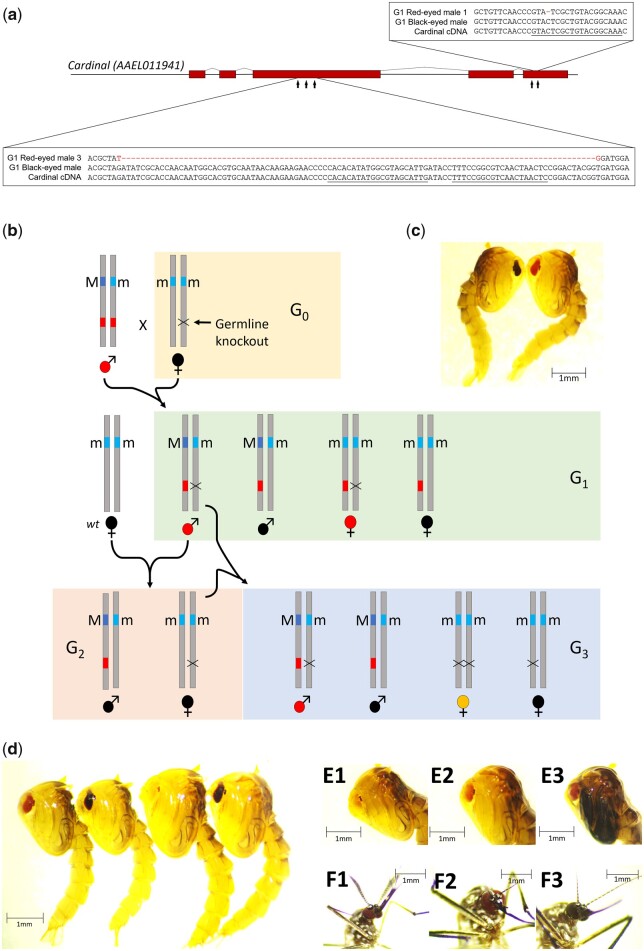Fig. 4.
Cardinal is the causal gene that underlies the spontaneous re mutation. a) Illustration of the cardinal gene and the relative positions of the 5 sgRNAs. A 1-bp deletion (in red) in red-eyed G1 male #1 and a 99-bp deletion (in red) in red-eyed G1 male #3 are also shown. The 1-bp deletion was found in the other sequenced red-eyed G1 individuals (male #1, 5, 6, and 7). None of the deletions was found in black-eyed G1 individuals. The sgRNA sequences near the deletion sites are underlined. b) Design for germline knockout of cardinal (G1) and the crossing scheme used to generate homozygous cardinal knockout (G3). The wild-type (+) ere color allele is not shown and the re allele is indicated as a red box. c) G1 black-eye (left) and red-eye (right) phenotypes. Four red-eyed G1 females and 7 red-eyed G1 males were identified among approximately 500 black-eyed G1 progeny. Sequence confirmation of the knockout is shown in (a). d) Four phenotypes observed in the G3 progeny shown in (b). From left to right: red-eyed male, black-eyed male, yellow-eyed female, black-eyed female. The G1 red-eye male has the 99-bp deletion (G1 red-eye male #3). (e) The eyes in the G3 yellow-eyed female pupa turn red over the course of pupal development. E1–3: 1-, 2-, and 3-day-old pupae. To highlight the eye phenotype, the contrast was adjusted to 20% and the brightness was adjusted to 20% (for E1–2) and 40% (E3). F) One-day-old G3 adult eye phenotypes of the red-eyed male (F1), yellow-turn-red-eyed female (F2), and black-eyed female (F3). To highlight the eye phenotypes, the contrast of images was adjusted to 25% and the brightness to 25% (F1–2) and 50% (F3). All unmodified photos are found in the Supplementary File.

